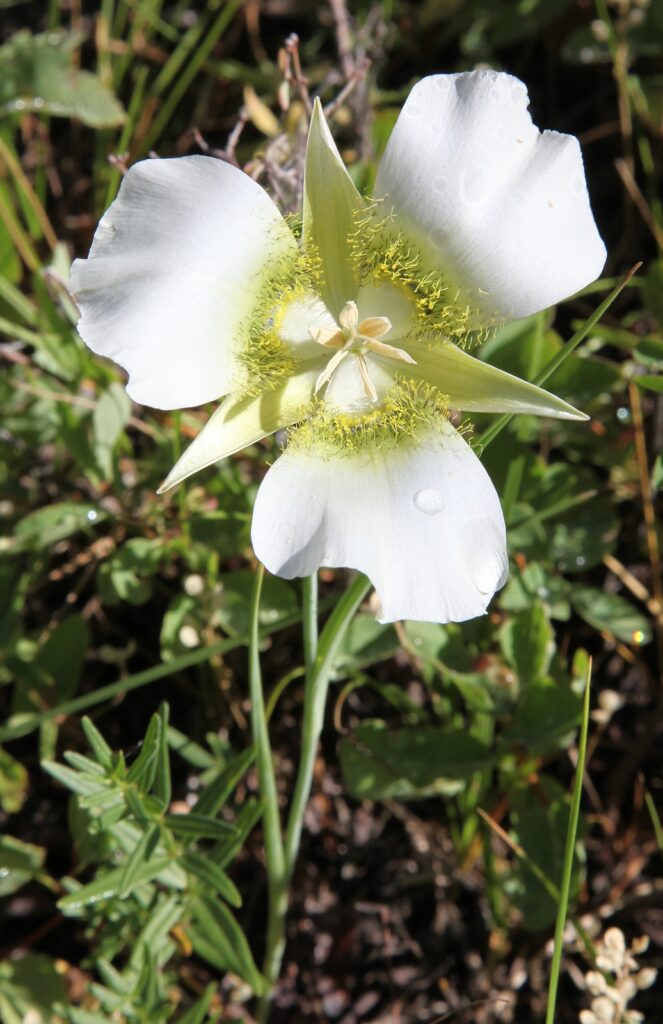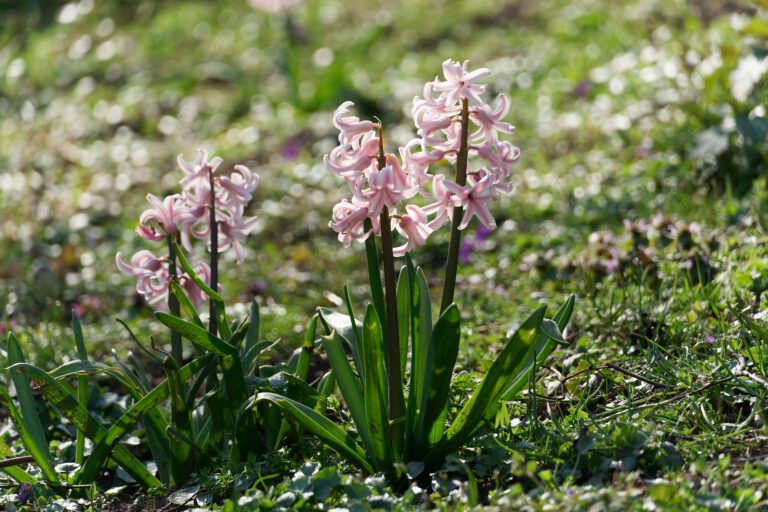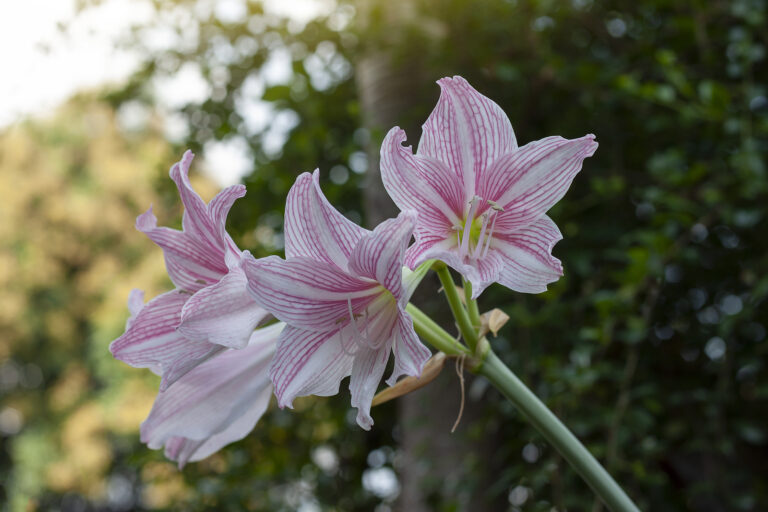How to Grow Fairy Lantern — Calochortus
Calochortus–commonly called fairy lantern or Mariposa lily–is a genus of bulbous perennials from western North America that bears tulip-like flowers in lilac, purple, rose, red, yellow, or white–all with distinctive “eyes” that resemble markings on butterfly wings. Calochortus have a distinctive nectary near the base of each petal.
There are several species of Calochortus that are widely cultivated in rocks gardens or for cut flowers in spring and early summer. Calochortus grows wild from California east to Colorado. The showy flowers appear mainly in spring and early summer.
Calochortus grow best in very well-drained, gritty soil that remains dry in summer. Bulbs should be lifted after the foliage dies in summer. Store the bulbs in a dry place and then plant them again before the ground freezes in autumn.
Calochortus is a genus of about 60 species native to grassland and open woodlands in western North America.
Get to know Calochortus
- Plant type: Bulbous perennial
- Growing zones and range: Zones 5-10
- Hardiness: Hardy to Zone 5
- Height and width: 4 to 20 inches tall
- Foliage: Lower leaves are long and narrow to 28 inches long; upper stem leaves are shorter
- Flowers: Tulip like flowers often with striking basal marks
- Bloom time: Spring and summer
- Uses: Mixed or herbaceous border
- Common name: Fairy lantern, Mariposa lily
- Botanical name: Calochortus
- Family name: Liliaceae
- Origin: Western North America

Where to plant Calochortus
- Grow Calochortus in full sun.
- Plant Calochortus in well-drained, sandy, loam.
- Grow Calochortus in a cold greenhouse or bulb frame where they are not hardy.
When to plant Calochortus
- Plant bulbs in autumn.
Planting and spacing Calochortus
- Plant Calochortus bulbs 4 to 6 inches (10-15cm) deep.
How to water and feed Calochortus
- Water Calochortus freely when in growth; water sparingly when the leaves die back.
- Calochortus can not tolerate water when dormant in winter.
- Fertilize Calochortus with a bulb fertilizer in spring.
Calochortus care
- Lift and store corms dry to protect them from rain when dormant and in winter.
Calochortus pests and diseases
- Calochortus is usually not bothered by pests or disease.
Calochortus propagation
- Sow Calochortus seeds in containers in a cold frame as soon as ripe.
- Remove and replant offsets in late summer.
Calochortus varieties to grow
- Calochortus albus, fairy lanter. Grows 4 to 20 inches tall, leaves to 28 inches long; bears nodding, spherical, or bell-shaped white flowers with a crescent-shaped nectary.
- C. amabilis. Grows 4 to 20 inches tall; conspicuous tepals sometimes tinged with green.
- C. barbatus. Grows 6 to 12 inches tall; open cup-shaped flwoers usually mustard-yellow with purple hairs.
- C. gunnisonii, Gunnison’s mariposa lily. Cup-shaped flowers varying form white to yellow; grows 16 to 24 inches tall.
- C. luteus, yellow mariposa. Grows 8 to 20 inches tall; deep yellow flowrs and red-brown lines and marks.
- C. macrocarpus, green-banded mariposa. Grows 8 to 20 inches talll usually deep purple rng inside towar the bases of petals.
- C. superbus. Grows 16 to 24 inches tall; cup-shaped, white, cream, lavender-blue or yellow flowers with broown marks.
- C. uniflorus. Grows 4 to 6 inches tall; lilac flowers with darker lilac makrs inside.
- C. venustus, white mariposa. Cup-shaped flowers varying form white to yellow, purple or dark red each with yellow-ringed, dark red mark inside.
- C. vestae. Grows 12 to 20 inches tall; cup-shaped white flowers tinged with purple.







